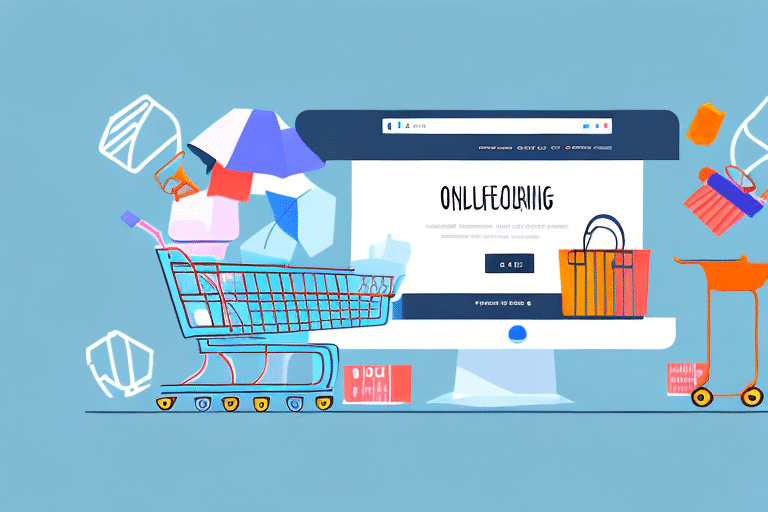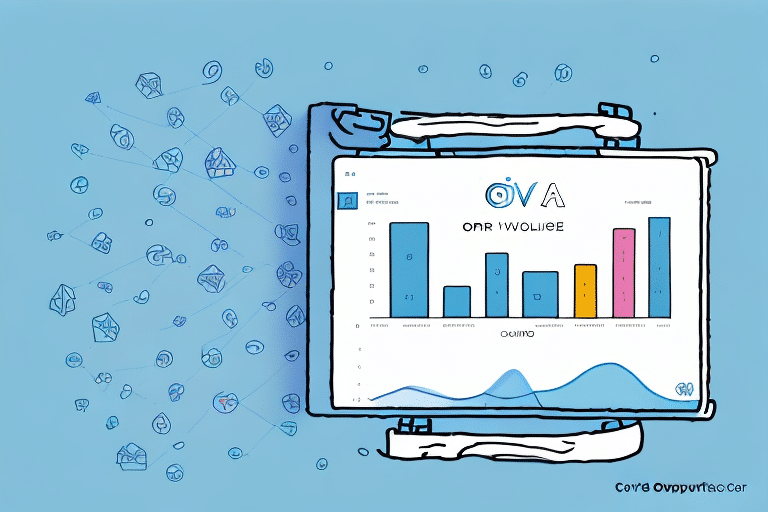How to Reduce Cart Abandonment: Proven Strategies to Increase Your Conversion Rate
Cart abandonment is one of the biggest challenges for e-commerce businesses. According to research from the Baymard Institute, the average cart abandonment rate is approximately 70%, leading to significant losses for businesses. However, there are proven strategies that can help reduce cart abandonment and increase your conversion rate. In this article, we will explore these strategies in detail.
Understanding the Impact of Cart Abandonment on Your Business
Cart abandonment occurs when a customer adds products to their shopping cart but does not complete the purchase. This can have a significant impact on your business, resulting in lost sales, reduced revenue, and increased advertising costs. Moreover, when customers abandon their carts, it can lead to a negative impression of your brand, potentially damaging your reputation and affecting future sales.
Understanding the reasons behind cart abandonment is crucial for addressing these issues and improving your conversion rate. The following sections will explore the most common reasons for cart abandonment and provide strategies to mitigate them.
Identifying the Reasons for Cart Abandonment
Common Reasons for Cart Abandonment
- Unexpected Shipping Costs: High or unexpected shipping costs at checkout can deter customers from completing their purchases.
- Complicated Checkout Process: A lengthy or complex checkout process requiring multiple steps or account creation can frustrate customers.
- Security Concerns: Lack of trust in the website's security can prevent customers from finalizing their transactions.
- Limited Payment Options: Not offering a variety of payment methods can lead to cart abandonment.
- Long Delivery Times: Extended delivery periods or unclear shipping information can dissuade customers from completing their orders.
Gathering Customer Feedback
One effective way to identify the reasons for cart abandonment is to conduct surveys or gather feedback from customers who have abandoned their carts. This can provide valuable insights into the specific pain points that customers are experiencing during the checkout process. Additionally, analyzing website analytics and tracking user behavior can help identify areas of the checkout process that may be causing confusion or frustration for customers.
Tools like Hotjar and Google Analytics can offer detailed insights into user behavior and highlight potential issues in your sales funnel.
Improving User Experience
The overall user experience of your website plays a crucial role in cart abandonment rates. A poorly designed or difficult-to-navigate website can lead to frustration and ultimately, cart abandonment. Ensuring that your website is user-friendly and optimized for mobile devices can help improve the overall shopping experience and reduce the likelihood of cart abandonment.
According to Statista, over 50% of global web traffic comes from mobile devices, making mobile optimization essential for any e-commerce business.
Streamlining Your Checkout Process
A complex and lengthy checkout process can often discourage customers from completing their purchase. To streamline your checkout process, consider the following strategies:
- Simplify Forms: Reduce the number of fields required to complete the purchase.
- Reduce Steps: Minimize the number of steps needed to finalize the transaction.
- Guest Checkout: Offer an option for customers to checkout without creating an account.
- Auto-Fill Features: Implement auto-fill systems to expedite the checkout process.
- Progress Indicators: Use progress bars to inform customers of their current position in the checkout process.
Ensuring that your checkout process is mobile-friendly is equally important. Optimize button sizes, use larger fonts, and minimize scrolling to enhance the mobile shopping experience.
Offering Multiple Payment and Shipping Options
One of the best ways to increase conversion rates is to offer customers a variety of payment and shipping options. This includes debit and credit card payments, as well as digital wallets like PayPal, Google Wallet, and Apple Pay.
On the shipping front, providing various options such as standard, expedited, and overnight delivery allows customers to choose what best suits their needs. Additionally, offering free shipping for orders over a certain amount can serve as a powerful incentive for customers to complete their purchases, especially during peak shopping seasons.
Research from Shopify indicates that free shipping can significantly increase the likelihood of a purchase, with some studies showing up to a 30% increase in conversion rates when free shipping is offered.
Enhancing Customer Engagement
Using Pop-Ups and Exit-Intent Technology
Pop-ups and exit-intent technology are effective tools to keep customers engaged and prevent them from abandoning their carts. Pop-ups can offer special discounts or deals that encourage customers to complete their purchase. Exit-intent technology detects when a user is about to leave the site and displays a message to encourage them to reconsider their decision.
However, it is important to use these tools judiciously. Overusing pop-ups can be intrusive and may drive customers away. Aim for a balance by using pop-ups that provide genuine value without overwhelming the user.
Implementing Retargeting Campaigns
Retargeting campaigns are a powerful way to bring back customers who have abandoned their carts. By using cookies to track users who have left your site, you can display targeted ads and personalized offers to encourage them to return and complete their purchase. Platforms like Google Ads and Facebook Ads offer robust retargeting capabilities.
Studies by WordStream show that retargeting can increase conversion rates by up to 150%, making it a highly effective strategy for reducing cart abandonment.
Personalizing the Shopping Experience
Personalizing the shopping experience can significantly increase customer loyalty and retention. By using customer data, you can display personalized recommendations, offer a tailored shopping cart, and customize your messaging to align with individual preferences. Personalization helps build a relationship with your customers, making them feel valued and understood.
Implementing personalization tools like Salesforce Einstein or Dynamic Yield can help automate and enhance the personalization process.
Building Trust and Social Proof
Providing Clear and Concise Product Information
Customers are more likely to complete a purchase when they have a clear understanding of the products they are buying. This includes detailed product descriptions, high-quality images, specifications, and transparent pricing information. Clear product information builds trust and reduces uncertainty, encouraging customers to finalize their purchases.
Leveraging Customer Reviews and Testimonials
Customer reviews and testimonials are powerful tools for building trust and increasing conversion rates. Showcasing positive reviews and testimonials on your website demonstrates the quality of your products and the satisfaction of your customers. This social proof can help overcome any objections and convince potential buyers to complete their purchases.
According to Nielsen, 92% of consumers trust recommendations from friends and family above all other forms of advertising.
Monitoring and Analyzing Cart Abandonment Metrics for Continuous Improvement
Continuous monitoring and analysis of cart abandonment metrics are essential for optimizing your sales funnel. This includes tracking key performance indicators such as abandonment rates, peak abandonment stages, and recovery rates. By analyzing these metrics, you can identify bottlenecks in your checkout process and implement necessary changes to improve the customer experience.
Utilize analytics tools like Google Analytics and Klipfolio to gather and visualize your data, making it easier to identify trends and areas for improvement.
Implementing Secure Transaction Processing
Ensuring secure transaction processing is paramount in building trust with your customers. Implementing SSL encryption, maintaining PCI compliance, and displaying trust badges on your website can reassure customers that their personal and payment information is safe. A secure shopping experience not only protects your customers but also reduces the likelihood of cart abandonment due to security concerns.
According to Symantec, 83% of consumers are more likely to trust businesses that offer secure transaction processing.
Partnering with Influencers and Affiliates to Drive Traffic and Boost Sales
Partnering with influencers and affiliates is an effective way to drive traffic to your website and boost sales. Collaborating with influential bloggers, social media personalities, and affiliate partners allows you to reach a broader audience and tap into new markets. These partnerships can enhance your brand’s credibility and attract customers who might otherwise be hesitant to make a purchase.
Platforms like Amazon Associates and ShareASale provide robust affiliate marketing networks to help you connect with potential partners.
Conclusion
Reducing cart abandonment rates is critical for e-commerce businesses aiming to increase their conversion rates and generate more revenue. By implementing the proven strategies outlined in this article, you can address the most common reasons for cart abandonment and improve your sales funnel. Whether it is streamlining your checkout process, offering multiple payment options, leveraging social proof, or launching retargeting campaigns, each strategy plays a significant role in enhancing the customer journey.
Continuously monitoring and analyzing your cart abandonment metrics allows for ongoing optimization and long-term success. By prioritizing customer trust, engagement, and loyalty, you can effectively reduce cart abandonment rates and create a more profitable and successful online business.








